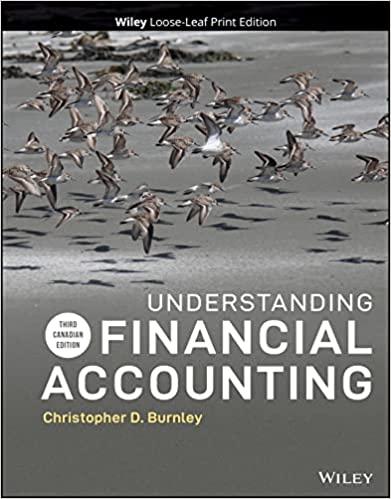Question
1. Describe three different types of capital property dispositions. In each case, indicate how the POD would be determined. 2. How is government assistance provided
1. Describe three different types of capital property dispositions. In each case, indicate how the POD would be determined.
2. How is government assistance provided for the purchase of capital property dealt with in the ITA? How does this differ from the accounting treatment of government assistance?
3. What is a superficial loss? What is the income tax treatment of such losses?
4. Describe the calculation of a taxable capital gain or an allowable capital loss.
5. A taxpayer may acquire a number of identical properties at different points in time at different costs. When there is a sale of part of a group of identical properties, how do you determine the ACB of the properties sold?
6. What is a retiring allowance and what are the income tax consequences associated with receiving a retiring allowance?
7. What is a death benefit? Indicate any special income tax consequences associated with the receipt of a death benefit.
8. Briefly describe the treatment of amounts received as scholarships.
9. List the situations in which an individual can deduct moving expenses.
10. Can an employer reimburse an employee for a loss on a home that was sold because the employee was required to move, without creating a taxable benefit for the employee? Explain your conclusion.
11. What are the income tax advantages associated with making contributions to an RPP or an RRSP?
12. In almost all cases, making contributions to an RRSP will provide for the deferral of income tax. In some cases, making such contributions may result in avoidance of tax. Explain these statements.
13. Tax advisors generally recommend making RRSP contributions as early as possible in the year in which the deduction will be claimed. Why is that the case?
14. Describe the difference between a defined benefit pension plan and a defined contribution or money purchase pension plan.
15. The RRSP Deduction Limit, as defined in ITA 146(1), is not a limit on contributions that can be made to an RRSP in a given year. Explain this statement.
16. Describe the tax features associated with retirement compensation arrangements (RCA).
17. Employee Profit Sharing Plans (EPSPs) are not as tax efficient as Deferred Profit Sharing Plans (DPSPs) in providing tax advantaged compensation to employees. Why is that the case?
18. Describe the basic differences between an RRSP and a RRIF.
19. List four non-legislative sources of income tax information.
20. What is the meaning of "taxation year" as the expression is used in the ITA?
Step by Step Solution
There are 3 Steps involved in it
Step: 1

Get Instant Access to Expert-Tailored Solutions
See step-by-step solutions with expert insights and AI powered tools for academic success
Step: 2

Step: 3

Ace Your Homework with AI
Get the answers you need in no time with our AI-driven, step-by-step assistance
Get Started


